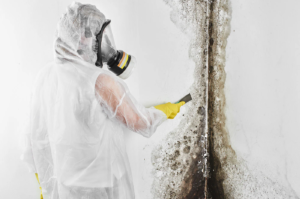Insulation removal is necessary for many remodeling projects that involve altering the walls, ceilings, and floors where the insulation is installed. Damaged, moldy, or old insulation must be removed to prevent health issues and structural damage. Insulation can also be the perfect nesting area for pests, leading to poor energy efficiency. Contact Perth Insulation Remover now!
Mold growth on insulation is a common problem. Roof leaks, water pipes or condensation in walls can cause it. It can also be caused by poor ventilation in the attic or basement. The best way to deal with the issue is to remove and replace the moldy insulation, clean and ventilate the area, and fix any problems that have caused the moisture. Moldy insulation should be removed and disposed of carefully, with care to isolate and contain the mold spores. It is recommended to use an EPA-registered fungicide for this purpose.

Some types of mold are more toxic than others. Black mold (Stachybotrys chartarum) is one of the most dangerous, and can cause a variety of health issues. If you suspect that your insulation is moldy, or if you notice unexplained coughing, sneezing, headaches or persistent odors, you should have the insulation tested by a professional, which can provide the information you need to take action.
In general, it is possible to remove and replace moldy insulation if the mold is limited to small areas of the attic or basement. However, in the case of extensive or recurring mold growth, it is generally better to have the insulation removed and replaced completely.
Insulation in the attic and basement can be easily damaged by a variety of things, including moisture damage and insect infestation. It is important to regularly inspect these areas of your home and to have any insulation that is damaged or infested with insects or vermin promptly replaced. You should also make sure that you regularly air seal these areas of your home to prevent moisture and mold from damaging the insulation and causing health problems.
Pest Infestation
Pest infestation can be extremely difficult to spot. Rodents and insects can easily hide in cluttered areas and hard-to-reach spaces. They can also thrive in dirty environments, so it is important to keep surfaces clean and free of food particles.
A good way to monitor for the presence of a pest infestation is to look for droppings and urine stains, which will indicate that the area has been infiltrated by these unwanted critters. Gnaw marks and damage to furniture, walls, or electrical wires can also be signs of pest activity.
Moisture can be another significant attractant for pests, so keeping areas like sinks and work surfaces dry is essential in preventing pest infestation. Performing regular inspections of your property is also important to ensure that any cracks or gaps in the walls and floors are closed off to prevent pests from entering.
Pests often have seasonal patterns influenced by temperature, moisture, and the availability of food sources. For example, rodents typically seek shelter indoors during the winter to protect themselves from harsh weather conditions. In the summer, cockroaches, ants, and mosquitoes are at their most active due to warmer temperatures and abundant food sources.
If you see any signs of pests inside your home, such as a pile of chewed paper or cardboard, gnaw marks on furniture, or holes in walls and ceilings, then it is time to call in a professional exterminator. A small number of pests can quickly become an infestation, so don’t wait to act. Also be sure to check the exterior of your home for ant hills, termite mud tubes, dead vegetation and wasps’ nests in the attic or crawl spaces.
Structural Damage
Structural damage involves the parts of a building that hold it up, such as foundations or walls. Damage to these areas can impact safety, cause serious financial damage, and negatively affect the building’s value.
Structural issues can arise due to environmental conditions, poor construction practices, or natural disasters like hurricanes and earthquakes. They can also be the result of accidents, or just age and wear and tear. Whatever the cause, it’s important to recognize warning signs and act swiftly to prevent further damage and avoid costly repairs and other potential problems.
The most common way to identify structural damage is by looking for cracks in the foundation or load-bearing walls of a building. Small hairline cracks might seem cosmetic, but larger, widening cracks indicate a more serious issue. Doors and windows that stick suggest shifting or movement in the building’s frame, while sagging floors and ceilings are indicative of serious shifts in the structure’s foundation or deterioration in the support system.
Other signs of structural issues include a lack of support or stability in the roof or floor, leaks, and mold and mildew. In addition, there may be issues with the building’s support systems or connections to water lines and electrical wiring.
Structural damage can be caused by environmental factors, such as extreme weather or the constant change from hot to cold. It can also be the result of poor construction or the use of substandard materials. It’s important to have the building inspected by a professional to determine whether it has sustained damage and what the next steps should be. For example, if a building is in danger of collapse or falling debris, it’s essential that the area be evacuated to ensure the safety of the occupants.


